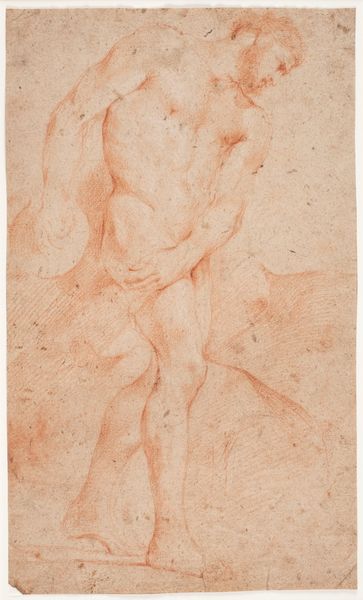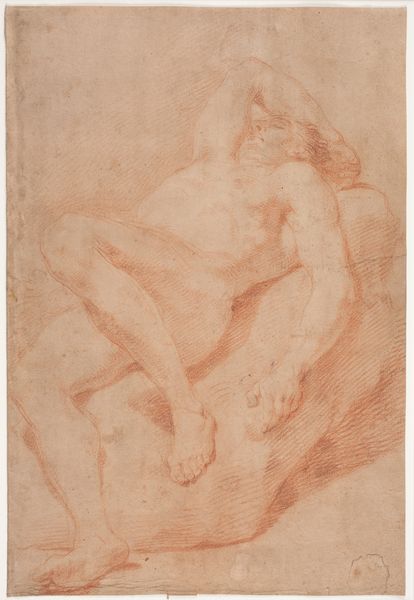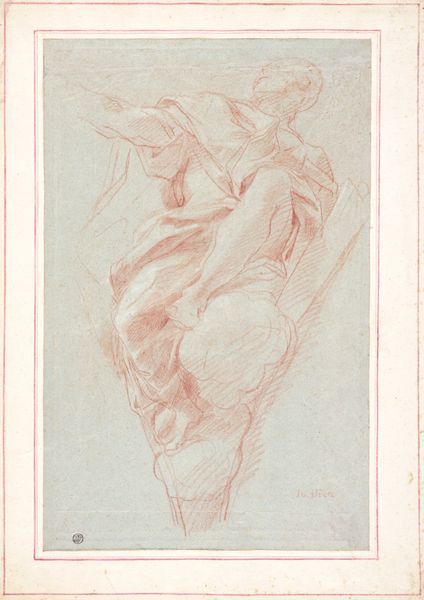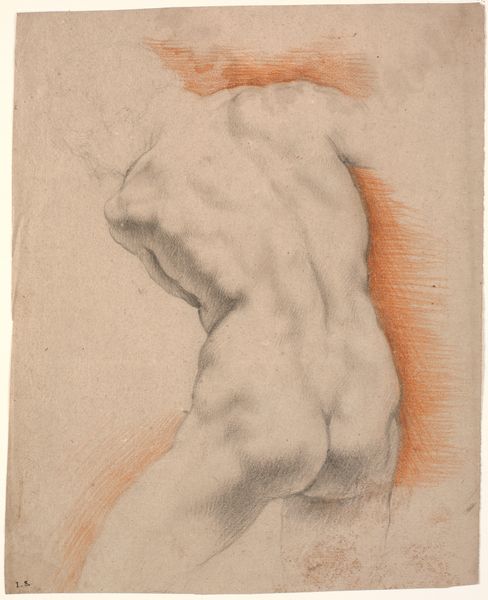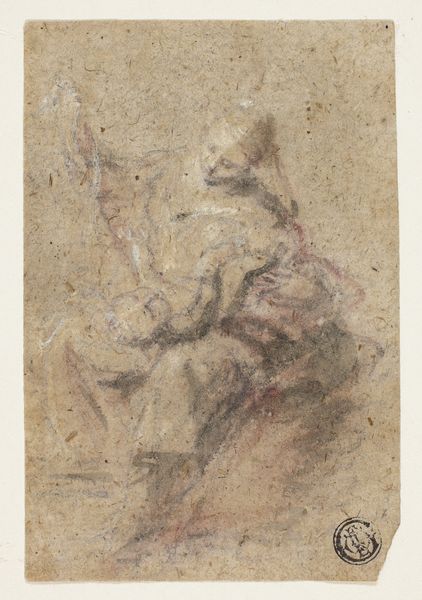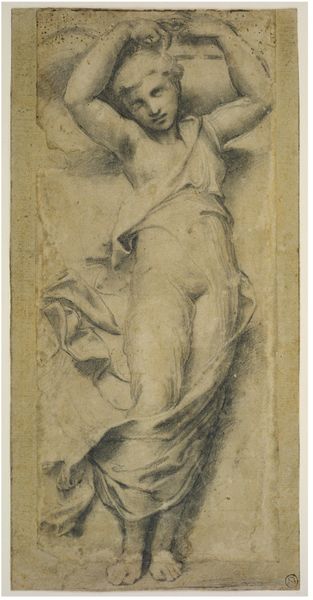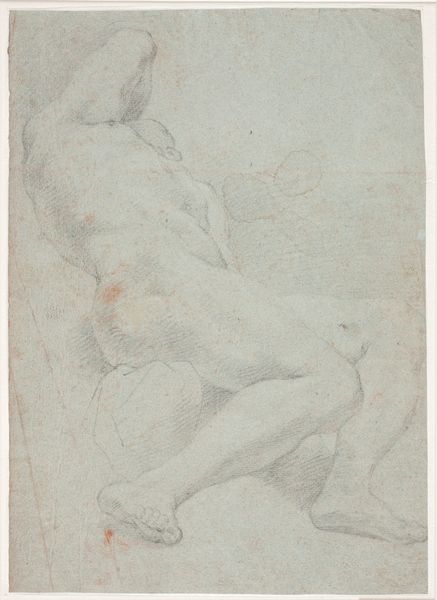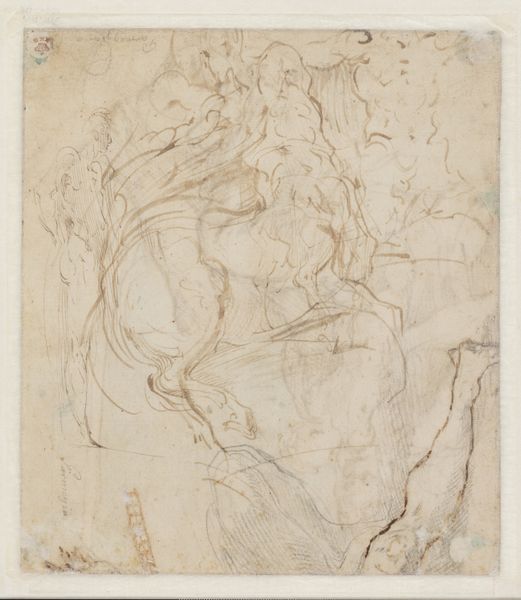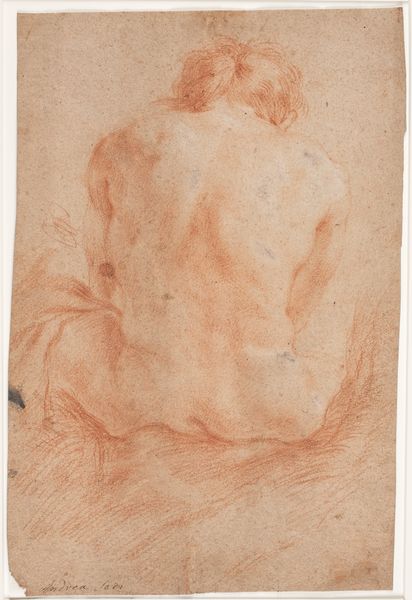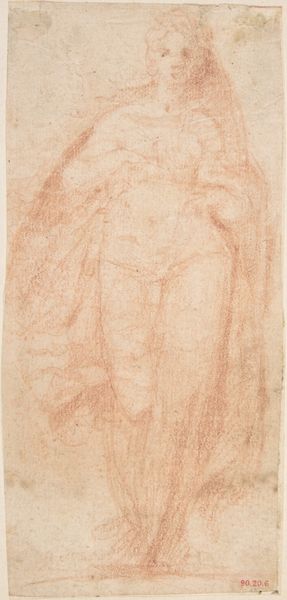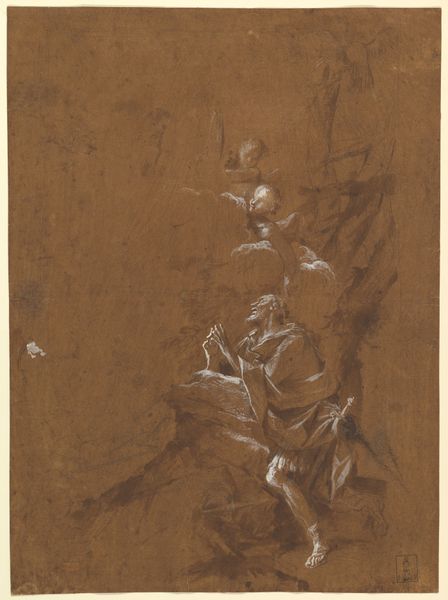
drawing, charcoal
#
drawing
#
baroque
#
charcoal drawing
#
figuration
#
charcoal
#
nude
Dimensions: 408 mm (height) x 272 mm (width) (bladmaal)
Editor: This is "Male Model Study, Sitting, Seen from the Back" by Hendrik Krock, dating from around 1671 to 1738. It's a charcoal drawing, a figural nude study, really. It feels so academic, almost like a study of idealized form detached from any specific context. How do we understand this work today, removed from its original training environment? Curator: Indeed, its academic nature is precisely the key. These model studies were fundamental to the training of artists in the Baroque period and beyond, primarily associated with the rise of art academies. We see a shift from workshop-based training to institutionally controlled artistic education. It reflects a deliberate construction of "art" as intellectual, disciplined work rooted in classicism and often supported by royal and state patronage. Does this shift impact the artwork, or artist’s career, and can it still be seen today? Editor: Absolutely, I’d imagine access to these academies heavily shaped artists' careers and visibility, with the curriculum embedding certain visual languages as more valid or ‘correct’ than others. The public role of art shifts as it aligns more closely with the ruling ideology. How does this link to the imagery we see being used and the control that Royalist patrons would exert? Curator: Precisely. The nude male form, meticulously rendered, becomes a symbol of classical virtue and order, legitimizing existing power structures. The act of drawing from life isn’t merely representational, it is inherently a social and political statement that speaks to both production and access. Are you finding these power relations influencing the type of art or artists work to this day? Editor: I never really considered it in those terms before, it's fascinating to consider the seemingly neutral practice of drawing from life having political and institutional underpinnings. This is an exciting view and allows an informed contextual viewpoint to understand the cultural framework around historical artworks and possibly for ones being produced today. Curator: Exactly, viewing this piece in its socio-political context as art, one can truly see a piece in the greater historical context. It has been enlightening, and these practices definitely permeate to this day.
Comments
No comments
Be the first to comment and join the conversation on the ultimate creative platform.
